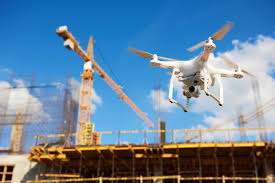
Embracing the Power of Disruptive Technology: Shaping Industries and Driving Innovation
The Rise of Disruptive Technology: Transforming Industries and Shaping the Future
In today’s fast-paced world, disruptive technology has become a driving force behind innovation and change across various industries. Defined as a groundbreaking technology that significantly alters the way businesses operate and deliver products or services, disruptive technology has the power to revolutionize traditional practices, create new markets, and shape the future of our society.
One prime example of disruptive technology is the advent of ride-sharing services like Uber and Lyft. These platforms have transformed the transportation industry by offering convenient, cost-effective alternatives to traditional taxi services. By leveraging mobile apps and innovative business models, ride-sharing companies have not only changed how people commute but have also created new opportunities for drivers to earn income.
Another area where disruptive technology is making waves is in healthcare. The rise of telemedicine and wearable health devices has enabled patients to access medical care remotely and monitor their health in real-time. This shift towards digital health solutions has the potential to improve patient outcomes, reduce healthcare costs, and increase access to medical services for underserved populations.
Moreover, disruptive technology is reshaping the financial sector through advancements such as blockchain technology and cryptocurrencies. Blockchain offers a secure and transparent way to conduct transactions without the need for intermediaries, while cryptocurrencies like Bitcoin provide an alternative form of digital currency that challenges traditional banking systems.
As disruptive technology continues to evolve, industries must adapt to stay competitive in an ever-changing landscape. Companies that embrace innovation and are willing to disrupt their own business models are more likely to thrive in this era of rapid technological advancement.
Looking ahead, it is clear that disruptive technology will play a crucial role in shaping our future. By fostering creativity, driving efficiency, and unlocking new possibilities, these groundbreaking technologies have the potential to transform industries, improve lives, and drive progress in ways we have yet to imagine.
Unveiling Disruption: A Guide to Recognizing and Understanding Disruptive Technologies
- How do you identify if a technology is disruptive?
- What are the disruptive technologies right now?
- How do you identify disruptive technology?
- What is an example of disruptive innovation?
- Why is disruptive technology important?
- What is disruptive effect of technology?
- What are the three disruptive technologies?
- What is an example of a disruptive technology?
How do you identify if a technology is disruptive?
Identifying whether a technology is disruptive involves assessing its potential to fundamentally change existing markets and business models. A key indicator of disruptive technology is its ability to offer unique value propositions that address unmet needs or create new opportunities for innovation. Disruptive technologies often start in niche markets or cater to underserved segments before expanding to disrupt established industries. Additionally, disruptive technologies typically exhibit exponential growth potential, challenging incumbents and reshaping the competitive landscape. By closely monitoring market dynamics, technological advancements, and consumer behaviors, one can better gauge the disruptive potential of emerging technologies.
What are the disruptive technologies right now?
The landscape of disruptive technologies is constantly evolving, with new innovations emerging at a rapid pace. As of now, some of the disruptive technologies making waves include artificial intelligence (AI) and machine learning, which are revolutionizing industries by enabling automation, predictive analytics, and personalized experiences. Additionally, blockchain technology is disrupting traditional systems by offering secure and transparent transactions without the need for intermediaries. Internet of Things (IoT) devices are also reshaping how we interact with our environment, from smart homes to connected cars. These disruptive technologies are not only transforming industries but also shaping the way we live and work in the digital age.
How do you identify disruptive technology?
Identifying disruptive technology involves recognizing innovations that have the potential to significantly alter existing markets, business models, and consumer behaviors. One key aspect is to look for technologies that introduce a fundamental shift in how products or services are delivered, often challenging traditional norms and practices. Disruptive technologies typically offer unique value propositions, such as increased efficiency, lower costs, or enhanced user experiences. Additionally, monitoring emerging trends, analyzing market dynamics, and staying informed about technological advancements can help in identifying disruptive technologies before they reshape industries. It is essential to be proactive in assessing the impact of new technologies and their potential to disrupt the status quo in order to stay ahead of the curve in today’s rapidly evolving digital landscape.
What is an example of disruptive innovation?
An example of disruptive innovation is the introduction of streaming services like Netflix in the entertainment industry. By offering a convenient and affordable way for consumers to access a vast library of movies and TV shows online, Netflix revolutionized how people consume entertainment. This disruptive technology not only challenged traditional cable TV providers but also changed viewers’ habits, leading to a shift away from scheduled programming towards on-demand streaming. Netflix’s success serves as a prime example of how disruptive innovation can fundamentally transform an industry and create new opportunities for both businesses and consumers.
Why is disruptive technology important?
Disruptive technology is important because it has the power to drive innovation, challenge the status quo, and transform entire industries. By introducing new ways of doing things and reshaping traditional business models, disruptive technology forces companies to adapt and evolve in order to stay competitive. This constant push for improvement not only spurs economic growth but also leads to the development of more efficient processes, better products and services, and ultimately benefits consumers by offering them more choices and improved experiences. Embracing disruptive technology is essential for staying relevant in a rapidly changing world and for unlocking new opportunities for growth and success.
What is disruptive effect of technology?
The disruptive effect of technology refers to the significant and often transformative impact that innovative technologies can have on industries, businesses, and society as a whole. When a disruptive technology emerges, it can fundamentally change the way products or services are created, delivered, and consumed, leading to shifts in market dynamics and business models. Disruptive technologies have the power to challenge established norms, displace traditional practices, and create new opportunities for growth and innovation. Embracing the disruptive effect of technology requires adaptability, foresight, and a willingness to evolve in order to stay relevant in an ever-changing technological landscape.
What are the three disruptive technologies?
What Are the Three Disruptive Technologies?
While numerous technologies can be considered disruptive, three stand out for their current and potential impact on society: artificial intelligence (AI), blockchain, and the Internet of Things (IoT). AI, with its ability to process vast amounts of data and learn from it, is revolutionizing industries by enabling more accurate predictions, automating complex tasks, and creating intelligent systems that enhance decision-making. Blockchain technology is disrupting traditional transaction models with its decentralized ledger system that ensures transparency and security in digital transactions. Lastly, IoT connects billions of devices worldwide, allowing for seamless communication between machines and ushering in a new era of smart technology in homes, cities, and industries. Together, these three technologies are redefining the boundaries of innovation and efficiency.
What is an example of a disruptive technology?
An example of a disruptive technology is the introduction of streaming services like Netflix in the entertainment industry. By offering a convenient and affordable alternative to traditional cable TV, Netflix has fundamentally changed how people consume media. Its on-demand model, coupled with a vast library of content and personalized recommendations, has revolutionized the way we watch movies and TV shows. This disruption has not only challenged the dominance of cable companies but has also paved the way for other streaming platforms to enter the market, reshaping the entire entertainment landscape.



